2018 Porsche Cayenne review, test drive
The third-gen, India-bound Porsche Cayenne may resemble its predecessor but how different is it? We head to the UAE and Oman to find out.
Published on Jan 25, 2018 10:42:00 AM
56,750 Views
Follow us on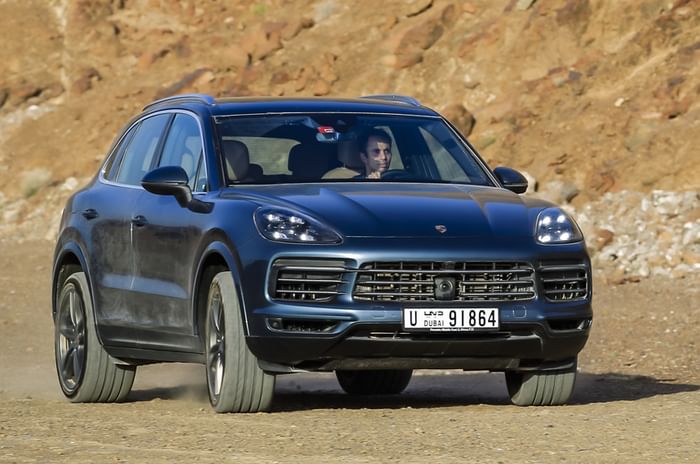
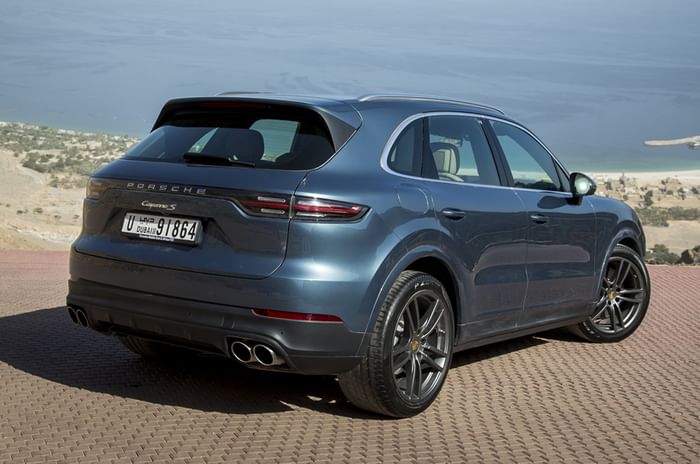
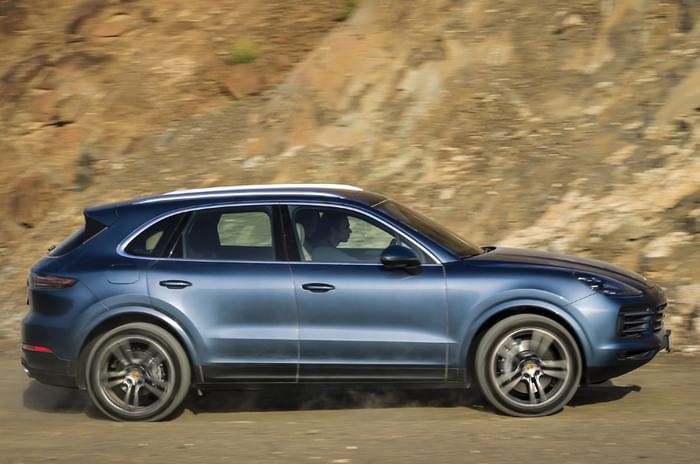
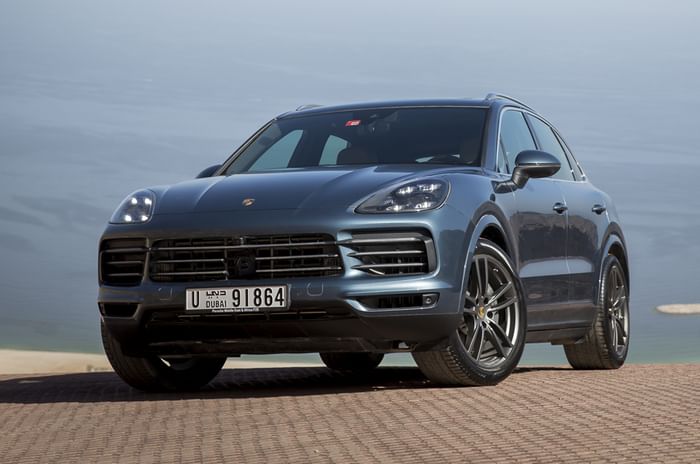
What is it?
Quite obviously a Cayenne; despite being all-new, this new third-generation Porsche hasn’t strayed far from its predecessor’s styling. This, of course, is no reflection of what’s inside and, mechanically speaking, the third-generation Cayenne is pretty much all new. While the second-generation Cayenne was based on the VW group’s PL72 platform, the new SUV is built using the groups MLB-Evo platform that also underpins SUVs like the Bentley Bentayga and the Lamborghini Urus. The flagship SUV also gets a set of newly developed engines from the new Panamera, a 48V electromechanical anti-roll bar system and electric rear-wheel steering. The interior is also new and gets the latest generation of the Porsche Communication Management (PCM) system that debuted with the new Panamera.
With an alloy-and-steel body structure, and an exterior made entirely of aluminium, Porsche claims the new Cayenne is lighter by up to 65kg when empty, despite having more equipment on board. At 4,918mm in length and 1,983mm in width, it is longer and wider than the previous model by 63mm and 44mm, respectively. However, its height has dropped by 9mm to 1,694mm. The wheelbase still measures 2,895mm, which is the same as the before.
Globally, the Cayenne is the company’s second-largest seller, following the Macan, while for India it is Porsche’s best-seller. So, a familiar and well-loved look, with new and thoroughly updated mechanicals, should make for a very compelling buy.
| Porsche Cayenne Price, Mileage, Specifications, Features and Variants | |
|---|---|
| Brand | Porsche |
| Model Name | Cayenne |
| Porsche Cayenne Price | ₹ 1.64 - 2.31 crore |
| Porsche Cayenne Range/Mileage | Petrol : 7.72 - 8.73kpl |
| Porsche Cayenne Specifications | SUV | 5 doors | 5 seats View All Specs |
| Porsche Cayenne Features | LED headlight | 12.3-inch Touchscreen display | 6 airbags View All Features |
| Porsche Cayenne Variants | 3.0 V6 Petrol | GTS 4.0 V8 Petrol View All Variants |

What’s it like on the outside?
Porsche’s press release says that the exterior is ‘visually enhanced’, and the front and the sides, bear testament to this; it’s really nothing new. However, the rear is a big design departure and now sports what will be every Porsche’s signature – a continuous light band.
At the rear, the Porsche lettering stretches out horizontally across the centre, with a number plate recess sitting below. The rear glass is raked steeply and hooded by a large spoiler that, on the Turbo, makes it the first SUV to have an active rear spoiler; it increases downforce for cornering grip or decreases stopping distance in airbrake position.
At the front, the short and wide grille is flanked by air intakes that are similar to it in height. Sitting above are the familiar-shaped 4 dot headlamps that are now offered in three grades. While every Cayenne will have LEDs as standard, the second grade will offer the Porsche Dynamic Light System (PDLS), which will have modes like cornering assist, and the third grade (PDLS Plus) will have matrix beam lighting that will use 84 individually controlled LEDs to adjust the high beam to prevent dazzling oncoming traffic or cause a glare on road signs. At the sides, it’s all familiar but the standard wheels are an inch larger in diameter, with fatter rubber at the rear.

What’s it like on the inside?
If the mild exterior makeover didn’t please you the interiors certainly should. The dashboard sports a new design and features Porsche’s new touchscreen and touch-surface-intensive communications system that had debuted on the Panamera. Oh, there’s also voice control. Mercifully, Porsche has ditched the gimmicky digital controls for the AC vents and it now simply lets you reach out and manually adjust them.
The centre of the dash is dominated by a large 12.3-inch full-HD touchscreen, and the instrumentation, which is typically Porsche, has a large central tachometer flanked by two 7.0-inch full-HD displays that, apart from displaying driving data and other information, also simulate the traditional Porsche five-dial instrument setup. Nearly all controls now get glass-like touch surfaces that give acoustic and haptic feedback. But I’m no fan of these as you still have to take your eyes off the road and look at them to operate; it isn’t as easy as feeling for a button.
Seating isn’t spacious by SUV standards; this isn’t your luxury barge but rather a SUV with a sporty nature, and when it comes to that, it’s pretty decent. And the sporty and sculpted plastic backs of the front seats serve as a constant reminder to those sitting at the rear. Seating at the back is just about comfortable for two, but not so much when it comes to seating a third one, due to the narrow central section. Boot space, at 770 litres, is pretty ample and what’s neat is that the space saver spare sits below the floor.

What’s it like to drive?
Due to regulatory issues in Porsche’s home market, there aren’t any diesels for now. Therefore only three versions of the Cayenne are available currently – the Cayenne, the Cayenne S and the Cayenne Turbo.
The base Cayenne is powered by the new turbocharged 3.0-litre V6 from the Panamera. It delivers 40hp and 50Nm of torque more than the previous Cayenne’s naturally aspirated 3,598cc V6, at 340hp and 450Nm of torque. The new Cayenne does 0-100kph in 6.2sec (5.9sec with the optional Sport Chrono Package) and tops out at 244kph – that’s 1.4sec faster and 15kph higher than the older model.
The S runs a new, more powerful 2.9-litre turbo V6 and, at 440hp and 550Nm of torque, it puts out 20hp more but the same torque as the 3,604cc naturally aspirated V6 it replaces. Porsche claims a 0-100 time of 5.2sec (4.9sec with the Sport Chrono Package) and a top speed of 265kph, which is better by 0.3sec and 6.4kph over the outgoing S.
The Turbo version is powered by a 4.0-litre V8, belting out 550hp and 770Nm of torque and exceeding its predecessor’s numbers by 30hp and 20Nm of torque. It claims a sprint to 100kph in 4.1sec, against the previous car’s 4.5sec (3.9sec with the optional Sport Chrono Package) and a top speed of 286kph.
While most owners would never take these cars off-road, we drove the Cayenne and the Cayenne S through a rocky mountain trail in Oman. Our on-road driving was in a convoy through the straight and smooth roads of the UAE and Oman, with just a two-minute stretch of unregulated twisty roads. Porsche is pushing the new Cayenne’s performance tag and what I can tell you from the short stint is that both the cars we drove do deliver to an extent. The engines are responsive and the gearbox, in typical Porsche manner, is lightning quick. When pushed, the Cayenne does feel like it’s working hard, whereas the S feels more in its natural territory. As with all Porsches, there is an optional Sport Chrono Package with four modes – Normal, Sport, Sport Plus and an individually configurable setting. On our drive, we didn’t really get to use the Sport Plus and switching to it when driving in the convoy made the car feel too aggressive; Sport mode, however, was quite useable.

As for the handing, driving on the two minutes of twisty roads really isn’t something I would base my final decision on, but the steering felt nicely weighted and the car was composed and sure-footed. Both our cars had the optional Porsche Dynamic Chassis Control (PDCC), which now has an electrically operated anti-roll bar system that’s claimed to provide faster response times than the older car’s hydraulic system. Another cool bit that's exclusive to the Turbo is the active spoiler that automatically rises up by 20mm to increase downforce when speeds exceed 160kph; in Sport Plus mode, it rises to 40mm, and if the sunroof is open it rises to 60mm to compensate for the loss in aerodynamics. An 80mm height is achieved in air-brake mode when braking from speeds of above 170kph; and just how efficient is this? Porsche says a braking reduction of two meters is possible when braking at 250kph. We didn't have the Turbo, but needless to say the active spoiler wasn’t something we would have got the chance to test.
As I mentioned before, we spent most of our time driving off-road and the mountain trails were simply breathtaking. This scenic setting made me appreciate the large panoramic sunroof in the Cayenne; looking up at the tall, towering mountains on both sides of the narrow trail was simply stunning, if also mildly unnerving. Navigating the trail was pretty fuss-free; the surface was basically gravel, with loose rocks strewn about. In its normal setting, the Cayenne did rumble a lot, but on switching to gravel mode in the off-road setting smoothened things out a bit and also eased our worry by lifting the ride height. The air springs can raise the body in three stages – low, medium and high – depending on the mode selected. For a while, we had set the hill descent mode to activate automatically, and it does work well. However, it would also activate on short sections, where it wasn’t required, and would brake and control the speed. So it’s best to activate the hill descent mode only when you know you need it for a longer or steeper gradient; where it works splendidly.
Should I buy one?
When launched, the Cayenne range in India will comprise of the base model, the Turbo and the hybrid, while the S version, Porsche officials say, will likely not make it. Pricing will start at just over the Rs 1 crore-mark, at which you also have the Range Rover Sport for company; against this British off-roader, the Porsche does offer a credible option.
The styling won’t scream ‘all-new’, unless, of course, you look at it from the rear – which is probably how most of us would see it – but the old car’s styling was very well-appreciated and is still very much with the times. The car’s drive is promising and what I can confirm is that rocky mountain trails are a piece of cake, should you want to venture there with your Cayenne.
Other than last year, where the Cayenne’s limited availability meant the Macan took the lead, the flagship SUV is Porsche’s largest selling model in India and, as things stand, it’s safe to say the new third-generation model is likely to be at the top again.
Also see:
New Porsche Cayenne India launch in June 2018
New Porsche Cayenne Turbo image gallery
Tech Specs 
Copyright (c) Autocar India. All rights reserved.


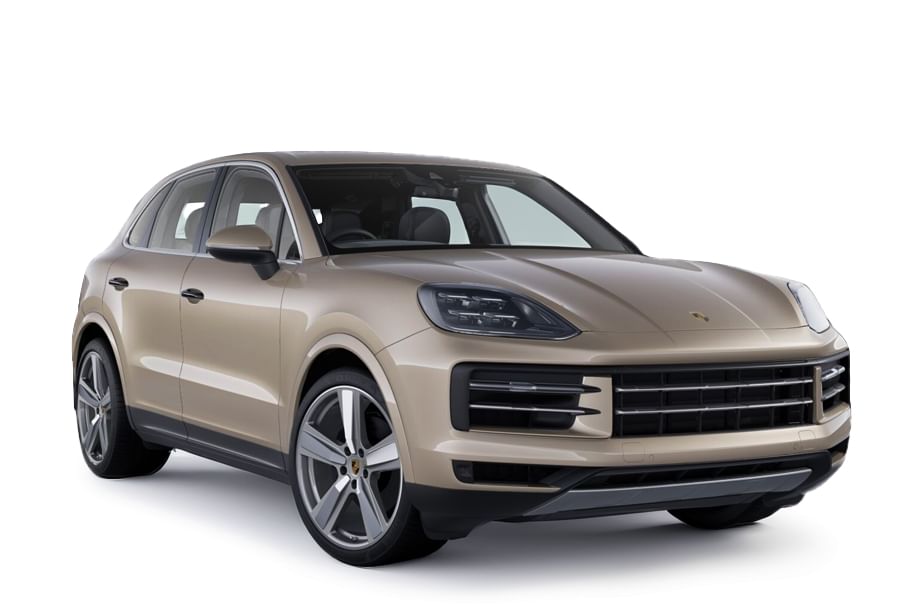

.png?w=234&h=156&q=90&c=1)




 Price
Price Engine
Engine Transmission
Transmission Efficiency
Efficiency Body
Body Dimensions
Dimensions
Comments
Member Login
Personal Details
No comments yet. Be the first to comment.